Underwater Reclamation
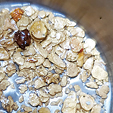 Working underwater certainly has its challenges, but since I wanted to learn how to blast underwater, I just needed to dive in headfirst and take charge of the operation.
Working underwater certainly has its challenges, but since I wanted to learn how to blast underwater, I just needed to dive in headfirst and take charge of the operation.
Crystallized Gold Mines of California
 Gold specimens that include visible crystal formations are among the rarest, most attractive and most valuable forms of gold to be found.
Gold specimens that include visible crystal formations are among the rarest, most attractive and most valuable forms of gold to be found.
How Far Has That Gold Traveled?
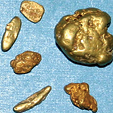 Let’s examine why your placer gold looks the way it does and what you can tell about its journey based upon its appearance.
Let’s examine why your placer gold looks the way it does and what you can tell about its journey based upon its appearance.
Breaking Boulders With Explosives
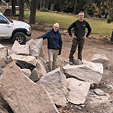 The process we will be using is called “blockholing,” and it is commonly used at mines and in construction projects to break up oversize material into sizes that can be easily handled.
The process we will be using is called “blockholing,” and it is commonly used at mines and in construction projects to break up oversize material into sizes that can be easily handled.
Setting Up A Placer Operation
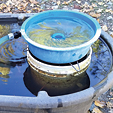 Trommels come in two basic sections. The first section is called the scrubber unit. The second is the punch plate, where the gravels and ore of a specified size drop out into a variety of sluice box recovery units.
Trommels come in two basic sections. The first section is called the scrubber unit. The second is the punch plate, where the gravels and ore of a specified size drop out into a variety of sluice box recovery units.
Building A Portable Gold Mill
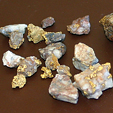 Through the milling process, the rock must be crushed and the values extracted. Let’s break down our discussion into the different parts and elements of the mill…
Through the milling process, the rock must be crushed and the values extracted. Let’s break down our discussion into the different parts and elements of the mill…
Using A Blasting Machine in Rock Breaking
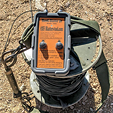 Whatever system you plan to use will require a way to safely initiate the explosives from a distance. In this article, we’re going to learn the basics of electric blasting and get a hands-on example…
Whatever system you plan to use will require a way to safely initiate the explosives from a distance. In this article, we’re going to learn the basics of electric blasting and get a hands-on example…
Secrets of Gold Research and Why You Need It
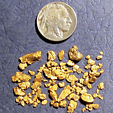 Prospecting may not be as much fun as it once was. If that sounds like you and you want to figure out what to do to get back on the gold and be successful, I’ve got the answer: Research.
Prospecting may not be as much fun as it once was. If that sounds like you and you want to figure out what to do to get back on the gold and be successful, I’ve got the answer: Research.
Placer Sampling for the Small-Scale Miner
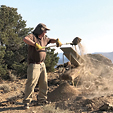 I have seen many samples taken originally with an eye toward getting the highest grades possible, but later someone claims that those results represent an average grade of the whole gravel deposit.
I have seen many samples taken originally with an eye toward getting the highest grades possible, but later someone claims that those results represent an average grade of the whole gravel deposit.
Commercial Placer Mining: Alaska Style
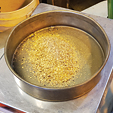 There are currently about 170 commercial-scale placer operations in Alaska. Most of these are small operations with just a few people working; they are often family affairs that operate seasonally only during favorable weather.
There are currently about 170 commercial-scale placer operations in Alaska. Most of these are small operations with just a few people working; they are often family affairs that operate seasonally only during favorable weather.
Surviving the Unexpected
 In this article, we will talk about how emergency response works in back country areas and go over some different ways to improve your chances of obtaining a good outcome should you get into trouble.
In this article, we will talk about how emergency response works in back country areas and go over some different ways to improve your chances of obtaining a good outcome should you get into trouble.
Libby, Montana Prospectors Keep Tradition Alive
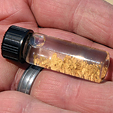 Located 23 miles south of Libby, the land surrounding the Libby Creek area has been of interest to prospectors since the early 1860s, when it was home to up to 600 miners working at a camp known as Libbysville.
Located 23 miles south of Libby, the land surrounding the Libby Creek area has been of interest to prospectors since the early 1860s, when it was home to up to 600 miners working at a camp known as Libbysville.
All About Hard Rock Drills
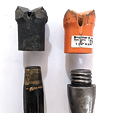 There are three basic power sources for rock drills—electricity, gasoline and compressed air. Before we go into big pneumatic drills, we’ll start with a quick rundown of each.
There are three basic power sources for rock drills—electricity, gasoline and compressed air. Before we go into big pneumatic drills, we’ll start with a quick rundown of each.
Fire Assay Finish by Silver Nitrate Fusion for PGMs
…my intent is to distribute this information in layman’s language so that even the “backyard/shade tree/mom & pop” fire assayers can benefit.
Commercial Blaster Training
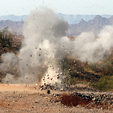 Since last year’s articles on explosives for mining, several people have asked for more information about becoming a licensed blaster.
Since last year’s articles on explosives for mining, several people have asked for more information about becoming a licensed blaster.
How Rich Must My Ore Be?
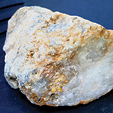 How rich does a hard rock ore have to be for it to be worthwhile to process and extract the gold?
How rich does a hard rock ore have to be for it to be worthwhile to process and extract the gold?
The ABCs of XRF
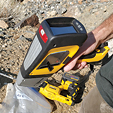 Fast forward to present day and the XRF has come of age. Pull the trigger on the hand-held device and you get a nearly instant assay of the surface of a rock.
Fast forward to present day and the XRF has come of age. Pull the trigger on the hand-held device and you get a nearly instant assay of the surface of a rock.
The 10-Ton Boulder: Expanding Grout Demolition
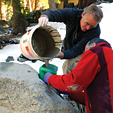 Imagine you have located a source of virgin placer ore containing immense gold value. Now imagine that there is a 10-ton monolith of extremely hard gneiss in between you and payday.
Imagine you have located a source of virgin placer ore containing immense gold value. Now imagine that there is a 10-ton monolith of extremely hard gneiss in between you and payday.
Simple Mine Surveying With Basic Hand Tools
 …there is an easy way to create a reasonably accurate map without any fancy instruments.
…there is an easy way to create a reasonably accurate map without any fancy instruments.
Dredging Do's and Don'ts
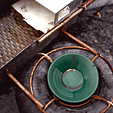 I’d start the day by crawling out of my dome tent, cooking up some Spam and eggs, and heating water for instant coffee on the Coleman stove.
I’d start the day by crawling out of my dome tent, cooking up some Spam and eggs, and heating water for instant coffee on the Coleman stove.












